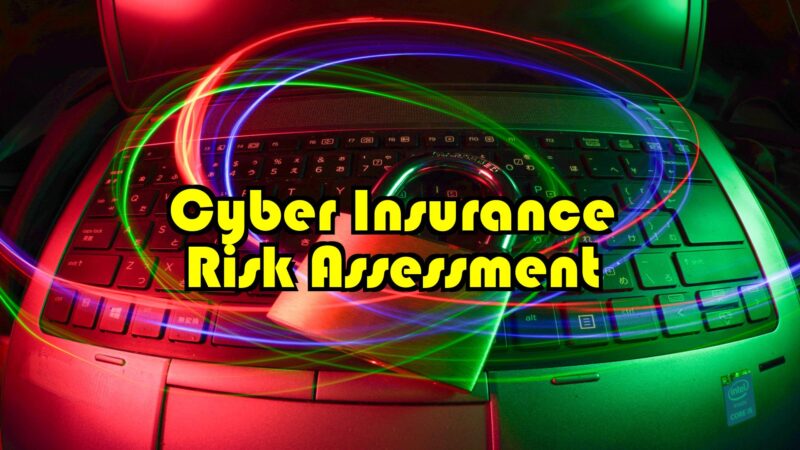The business world is hyper-connected these days. Cyber insurance risk assessment is very important for businesses. As more businesses use digital platforms, there is more danger of cyber threats. In this guide, we’ll explore the details of cyber insurance, its vital role in protecting your business, and why a careful risk assessment is crucial for your cybersecurity strategy.
Understanding Cyber Insurance
To perform a cyber insurance risk assessment you will have to evaluate the cybersecurity posture of an organization in a systematic way. So that you can identify vulnerabilities, assess potential threats, and determine the overall risk of a cyberattack.
The Need for a Proactive Approach
Proactive Cyber Risk Assessment
To navigate the complex landscape of cyber threats, businesses must adopt a proactive approach, starting with a thorough cyber insurance risk assessment. This assessment involves identifying potential vulnerabilities, evaluating the impact of cyber threats, and formulating strategies to mitigate risks. By understanding your organization’s unique risk profile, you can tailor your cyber insurance coverage to address specific concerns.
Customized Coverage Solutions
One size does not fit all in the realm of cyber insurance. A tailored approach ensures that your coverage aligns with your business’s specific needs and vulnerabilities. From intellectual property protection to regulatory compliance, a comprehensive cyber risk assessment lays the foundation for crafting a customized insurance policy that leaves no stone unturned.
Key Components of Cyber Insurance Risk Assessment
Define the Scope:
- Decide if you’ll do the assessment internally or hire an external expert for an unbiased view.
- Identify critical assets like data servers, financial systems, customer databases, and intellectual property for better cyber insurance risk assessment.
Identify Assets and Vulnerabilities:
- List all IT infrastructure, including hardware, software, applications, and cloud resources.
- Check for weaknesses using automated tools or manual testing.
- Evaluate how you handle sensitive data – from classification to protection.
Analyze Threats and Likelihood:
- Research common threats in your industry, like phishing, malware, ransomware, and data breaches.
- Estimate the likelihood of each threat happening based on your vulnerabilities for cyber insurance risk assessment.
Evaluate Potential Impact:
- Think about the consequences of a cyberattack, such as financial losses, reputational damage, operational disruption, legal issues, and regulatory fines.
- Rank risks based on likelihood and potential impact for cyber insurance risk assessment.
Develop Mitigation Strategies:
- For high-priority risks, create strategies to reduce the chances or impact of an attack. This could include fixing vulnerabilities, enhancing employee security training, setting up data backup plans, and strengthening network security monitoring.
Document and Report Findings:
- Create a detailed report summarizing findings, highlighting key risks, and suggesting mitigation strategies.
- Share the report with relevant stakeholders, including decision-makers, IT personnel, and insurance providers.
ALSO READ: Enterprise Cybersecurity: Expert Guide
Choosing the right cyber insurance policy can feel overwhelming, but it’s a crucial step in protecting your business from the ever-growing threat of cyberattacks. Here’s a breakdown of key factors to consider:
1. Assess Your Needs:
- Identify your assets: What data, systems, and infrastructure are critical to your operations?
- Evaluate potential threats: Consider your industry, size, and typical cyberattacks in your sector.
- Estimate potential impact: Analyze the financial, reputational, and operational consequences of a cyberattack.
2. Understand Coverage Options:
- First-party coverage: This covers your own costs like data recovery, forensic investigations, and business interruption.
- Third-party coverage: This covers liabilities you may face due to a data breach, such as customer lawsuits or regulatory fines.
- Additional coverages: Consider options like cyber extortion, social engineering fraud, and cybercrime prosecution costs.
3. Compare Policy Details:
- Coverage limits: Pay attention to sub-limits for specific types of coverage.
- Deductibles: Choose a deductible you can afford without jeopardizing your business.
- Exclusions: Carefully review exclusions to avoid surprises later.
4. Evaluate the Insurance Provider:
- Financial stability: Choose a reputable insurer with a strong track record.
- Claims handling process: Understand their response and support protocols in case of an incident.
- Cybersecurity expertise: Look for an insurer with dedicated cyber risk specialists.
5. Get Quotes and Negotiate:
- Compare quotes from multiple insurers: Don’t settle for the first offer.
- Negotiate premiums: Highlight your strong cybersecurity practices for potential discounts.
Additional Tips:
- Read the fine print: Don’t just rely on summaries; thoroughly review the policy wording before purchasing.
- Maintain good cybersecurity hygiene: Strong security measures make you a less attractive target and can lower premiums.
- Regularly review your policy: Update your coverage as your business and the cyber threat landscape evolve.
ALSO READ: 8 Privileged Access Management System Use Cases for Cybersecurity
Conclusion: Securing Your Business’s Digital Future
In conclusion, a proactive cyber insurance risk assessment is not just a prudent business strategy; it’s a cornerstone of cybersecurity resilience in the digital era. By following these steps and continuously improving your cybersecurity practices, you can effectively manage your cyber risks and obtain favorable terms for cyber insurance coverage.









